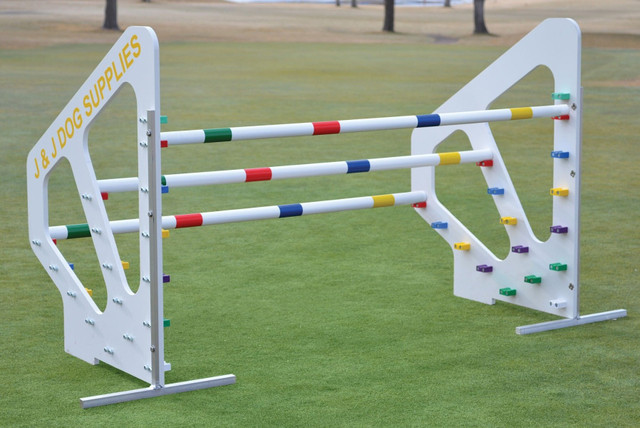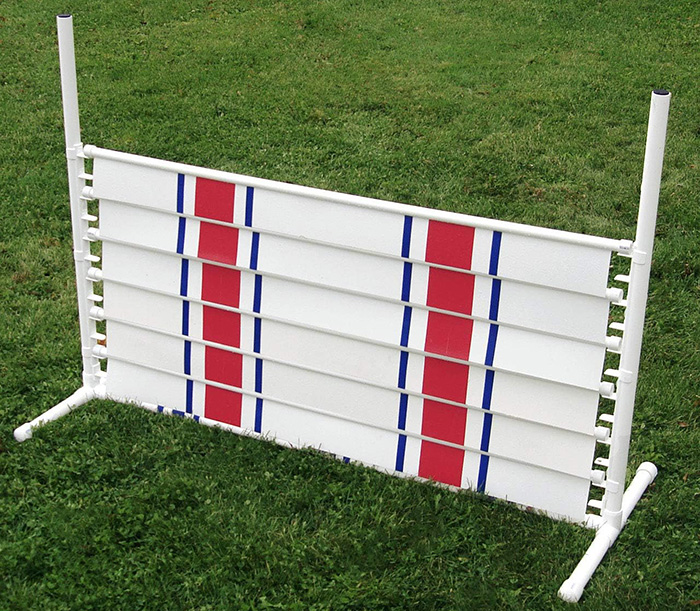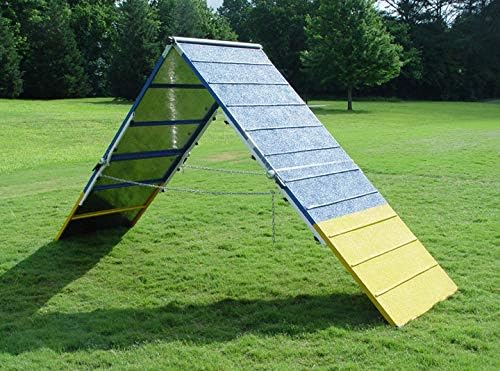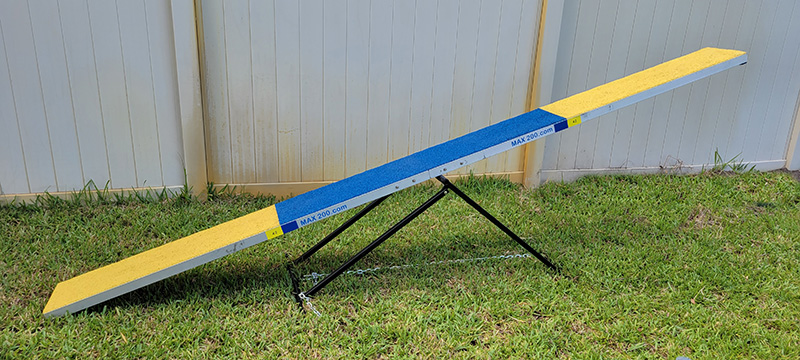Dog Agility
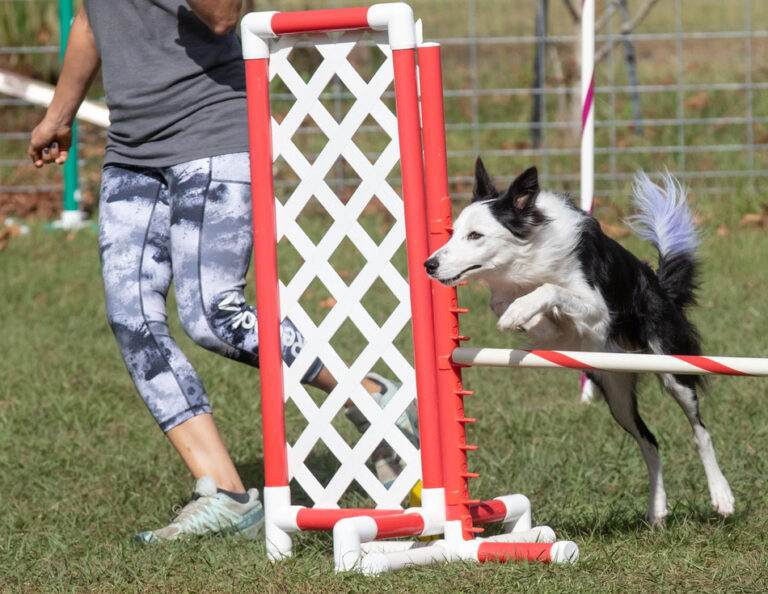
Photo courtesy of ABC Dog Training.
Heads Up: This page includes affiliate links, which are marked by an “*”. If you click and purchase, I may receive a small commission at no additional cost to you. But rest assured – my opinions are my own, I would never recommend something I haven’t or wouldn’t purchase for myself.
My pups do all kinds of dog sports but my favorite is agility. If you’ve never taken agility classes with your dog, you probably don’t really understand what it is about. A lot of people think it is just about dogs learning how to run an obstacle course, but there really is a lot more to it. Please read on if your curious about how to get started in dog agility.
What is Dog Agility?
More than anything, dog agility is about communicating and having fun with your dog. Agility is actually a team sport and your performance is just as important as your dog’s, if not moreso. That’s because the cues you give your dog tell them what obstacles to take. That may sound pretty easy, but it isn’t. Dogs have an amazing ability to read your motions and body language. If your feet are pointing in the wrong direction or you say an unfamiliar word, your dog is likely to go off course. But the good news is you don’t have to be super fit to participate in agility. It certainly helps if you can run, but even if you can’t, you can teach your dog to go away from you to take the obstacles. This is harder for your dog to learn, but certainly doable. I frequently see people at trials who can barely walk but their dogs still run a fast course. I’ve never been an athletic person, but I love agility! And doing it is helping me get in shape.
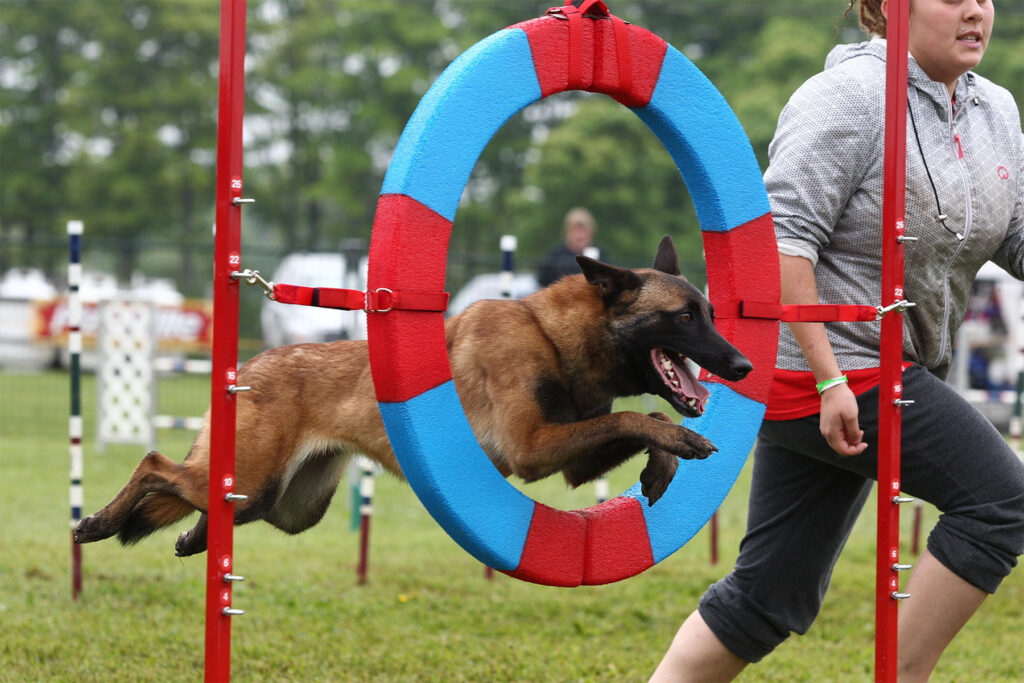
Photo courtesy of K9Central.
What you do need to be successful in agility is the willingness to spend time taking classes with your pup and training them at home. One of the best things about canine agility is that it helps you build an amazing bond with your dog. I’m certain it is one of the reasons that my dog, Josie, really listens to me, even when we aren’t doing agility.
So, let’s go over how it works in more detail. Agility courses are set up by your trainer or by a judge in the case of a trial. Numbered cones or markers are placed by each obstacle, on the side of the obstacle you are supposed to enter from. Before you run your dog, you walk through the obstacle course, learning the order of the obstacles and practicing how you are going to direct your dog through them.
What Obstacles are in a Dog Agility Course?
There are several types of dog agility obstacles, including different styles of jumps, a tire, a pause table, tunnels, weaves and a variety of contact obstacles. The contact obstacles include the teeter, the dog walk and the A-frame. These are called “contacts” because there is a painted area that the dog’s paw must come in contact with as they are coming off of the obstacle. Different types of jumps include the standard single jump, wing, double, triple, panel, and broad jumps. Each jump has a slightly different challenge to it. The height that the jump is set at depends on the dog’s height. When your dog is just learning, you can start them at lower jump levels. Puppies should not jump any height because it can cause them injury. But you can still start agility training with your puppy by setting up a jump and placing the pole on the ground. This way they get used to seeing the jumps and learn that they have to go over the bar. Check out some of the dog agility obstacles in the photos below.
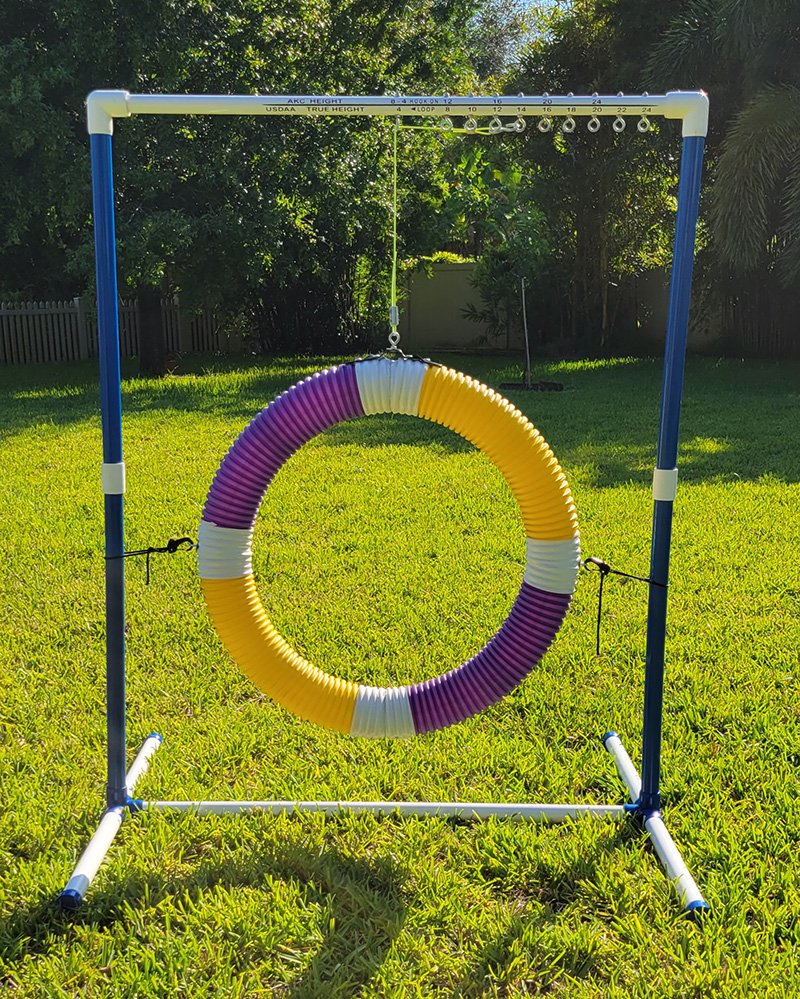
Tire Jump
How to Train a Dog for Agility
So, are you ready to learn how to train a dog to do agility? Before starting agility training your dog needs some basic obedience skills. They need to know the commands “sit”, “stay”, and “come”. And they need to follow those commands consistently and in new places they’ve never been to before. Some agility trainers will allow you to start agility classes with your dog on a leash, but I don’t recommend it. It’s hard not to get tangled up and you really can’t focus on your handling skills the way you should. Before starting in agility, I would first take obedience classes and make sure your pup is comfortable in a classroom setting and is able to focus on you and follow your commands.
Once you feel your dog is ready, the first step to getting involved in canine agility is to find a local dog trainer who specializes in agility training. Agility isn’t really something you can do at home without preparation. First of all, dog agility requires equipment and good equipment can be quite expensive. Secondly, you would need a very large yard to do full agility courses. But most importantly, YOU have to learn how to direct your dog through the obstacles, and it’s really not a skill you can acquire from just watching videos. Once you start going to agility classes, your trainer will give you exercises that you can practice at home. You’ll be able to practice a lot of handling techniques without having to buy agility equipment. Although purchasing an inexpensive set up weave poles is a great idea because weaves are by far the hardest obstacle for a dog to learn. I recommend the stick in ground poles* if you have a grassy spot to practice. Those are what I currently use. But when I first started doing agility with my dogs I didn’t really have a backyard, so I used the PawHut brand of adjustable weave poles*.

Photo courtesy of The Boston Globe.
Once you start taking classes, you can supplement your training with online materials. If you decide to pursue the sport, consider joining a Facebook agility group or a Reddit agility community. I also recommend that you join a local agility club if one is nearby.
Should I Take My Dog to Agility Trials?
You don’t have to decide right away whether or not you want to trial. Just learning the sport and taking classes is a lot of fun. Sometimes people get into agility just for fun but later decide to take their dogs to trial. However, I’m a pretty competitive person, so I went into training with the intent of doing trials if my dog took to the sport. But even though I’m competitive, I don’t go into a trial looking for a 1st place ribbon, rather, I set goals for myself and my dog and we work toward reaching them. The first goal is to get a “Q” – that is what people call a qualifying run. Whether or not a run qualifies (earns a Q) depends on the rules of the agility association for the type of course you are running and the level you are competing at. After getting a defined number of “Q’s” at a certain level, you can then move up to the next level for that type of course. There are always new goals to set for yourself and your dog. Of course, getting first place is great, but you and your dog don’t need to be better than other dogs to compete successfully.
Although AKC is what most people have heard of, the American Kennel Club isn’t the only dog association to offer agility trials. Here are a few others:
I only trial in one association (AKC) because I find it too confusing to learn the different rules in each club. Also, I don’t want to spend any more money than I already do! I know a lot of people who choose CPE over AKC because it is more laid back.
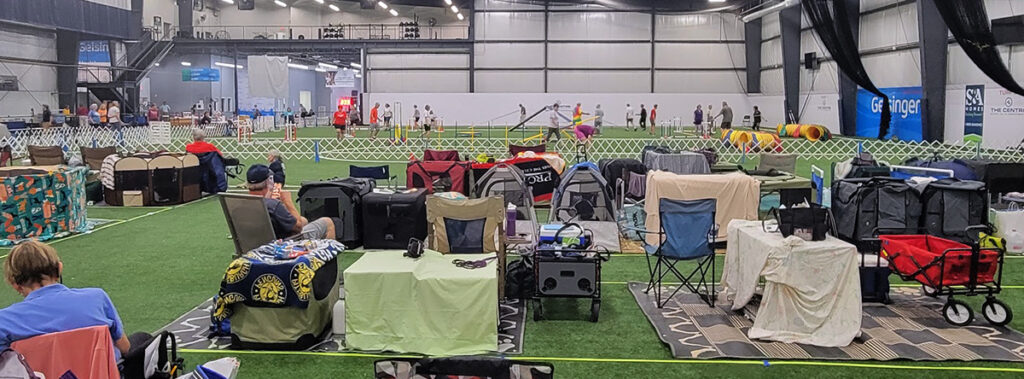
An Indoor AKC Agility Trial at Nittany Valley Sports Centre, State College, PA
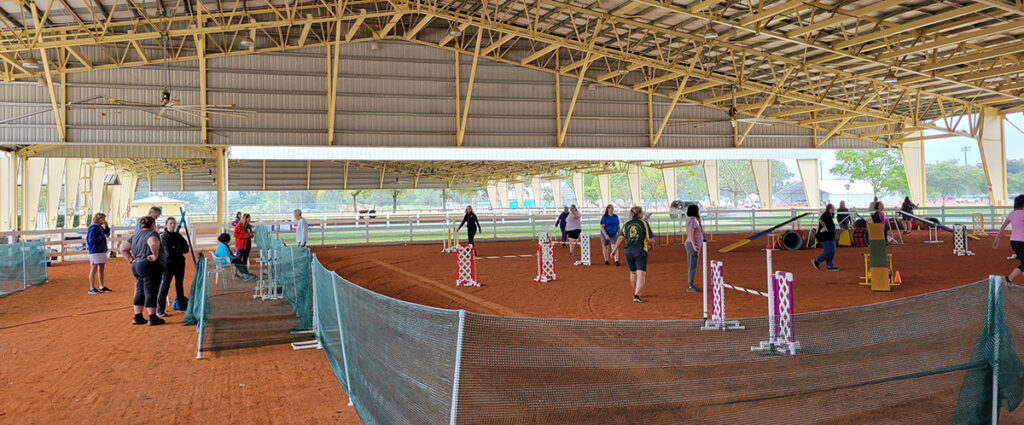
An AKC Agility Trial at Tropical Park Horse Arena in Miami, FL
I hope this article has given you a little insight into what dog agility is like. If you have any questions, feel free to ask them in the comments section below.


